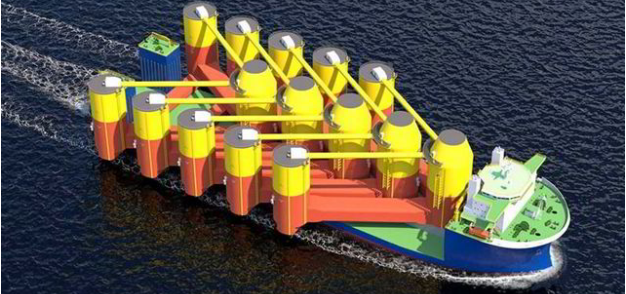‘Stackable’ floating wind platform from China’s CIMC Raffles gets ABS stamp of approval
D-Floater concept from subidiary Bassoe Technology, engineered for 15MW turbines and cost efficient fabrication in a range of ports worldwide, awarded ‘approval in principle’.
An innovative ‘stackable’ floating wind platform design from China’s CIMC Raffles company Bassoe has been given key ‘approval on principle’ (AIP) certification by the US’ American Bureau of Shipping (ABS).
The designer’s D-Floater semisubmersible concept, a three-column delta-shaped hull engineered for 15MW wind turbines, has been fashioned to be loaded on a heavy-lift vessel in fives one “inside another, allowing for mass transport to project sites.
“ABS adds the Bassoe D-Floater to its list of pioneering floating innovations that we have been able to support,” said Lars Samuelsson, ABS’ head of global floating offshore wind.
“This list includes classification of the first and largest floating wind projects. Now we are able to support floating turbines capable of matching the capabilities of fixed bottom equivalents in scale and consequent generating capacity.”
The D-Floater has a tow-out draft of less than 10 meters with turbine installed, affording flexibility in assembly port selection and to allow quayside installation of the tower and turbine potentially closer to a project site.
Bassoe Technology managing director Tore Ulleland said: “The D-Floater is a floating foundation designed for cost efficient fabrication and logistical solutions to meet the growing demand for renewable energy.
Using CIMC Raffles yards, Bassoe estimated it can deliver some 50 D-Floaters a year.
Bassoe in 2021 received an AIP from ABS for its T-Floater floating wind platform concept.
ABS has classed many of pioneering floating wind projects, including the world’s largest, Scotland’s 50MW Kincardine, which is located off Aberdeen.
Consultancy DNV calculates floating projects currently make up over 15% of the total offshore wind deployment in the pipeline for switch-on by mid-century, equal to some 264GW of the 1,750GW slated to be installed.
Source: Recharge



